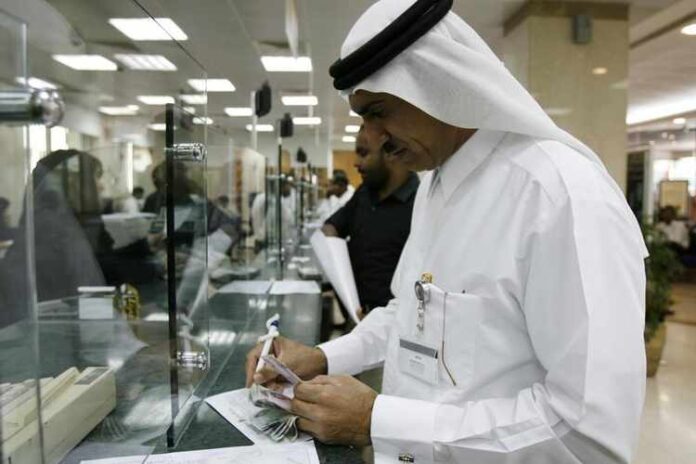MOSCOW/CAIRO: The Gulf Cooperation Council’s banking sector continues to show signs of strengths with core customer deposits remaining the main source of funding for the regional banks, a report by S&P Global rating said.
The ratings firm said Saudi Arabia led the region in lending which grew by 7.9 percent. Corporate lending and mortgage activity dominated the scene.
Growth in the Saudi banks’ lending pushed the overall GCC annualized rate to 8.4 percent in 2021, up from 6.6 percent in 2020.
As compared to the Kingdom, the GCC countries recorded slower growth in their offered loans. Most notably, the UAE had a very small (annualized) growth in lending; amounting only to 0.6 percent. However, S&P expects this to change in 2H 2021 with the start of Expo 2020.
Apart from Qatar, only Bahrain exceeded the 10-percent mark for the net external debt/systemwide loans ratio while other countries such as Saudi Arabia and the UAE reported negative values; a sign that the majority of banks in the region are mainly depending on core customer deposits not external funding.
On the other hand, Qatar’s banking system increased its wholesale funding significantly in the last few years as its net external debt/systemwide loans ratio was nearing 40 percent for 2020 and the 2021 forecast, S&P Global Ratings showed.
The ratings firm said:“Qatari banks are now vulnerable to a shift in investor sentiment or a scaling back of Western central banks’ liquidity support measures.”
Customer deposits in the GCC grew by an annualized 6.6 percent in the first half of 2021, a slight increase from the 6.3 percent recorded in 2019. This rise was driven by jumps in consumer spending and corporate activities, following recovery from the adverse effects of the pandemic in 2020.
The report stated that Western and local central banks’ interventions were among the primary reasons that protected GCC banks from uncertainty and deteriorations in asset quality. They provided regional banks with the much-needed liquidity injections and regulatory forbearance measures.
Islamic banks and conventional banks’ asset quality were also compared in the report. Asset quality did not differ much between the two types of banks as Islamic banks’ NPL ratio stood at 3.5 percent at June 30, 2021, compared to the slightly higher 4 percent for conventional banks.
Islamic banks’ maintained a slim upper-hand again in the coverage ratio, recording 157.3 percent in the first half of 2021 while conventional banks’ ratio amounted to 139.5 percent.
S&P added that: “We consider these ratios comparable and don’t read much into the slight differences between the segments.”
The report points out that Islamic banks usually have a higher exposure to the real estate sector than conventional banks due to the asset backing principle of Islamic finance, which results in higher collateralization.
The report stressed that “collateral realization is still difficult in the GCC. In addition, real estate is the preferred form of collateral and its value has been declining in most GCC markets over the past three years.”
The UAE also experienced the biggest deterioration in asset quality as its NPL ratio reached 6.6 percent in the first half of 2021. This is due to a fraud case involving a large corporation and strains on the construction, real estate and hospitality sectors.
The entire region’s NPL ratio rose to 3.8 percent on average at mid-year 2021, up from 3.1 percent at the end of 2019, according to S&P’s sample of banks.
S&P expects it to further rise in the next 12-24 months while staying below 6 percent.
Saudi banks lead Gulf in loan growth as sector posts strong quarter

